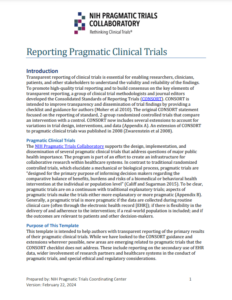On December 3, 2014, the National Institutes of Health (NIH) issued a draft policy promoting the use of a single institutional review board (IRB) for multisite studies. IRBs play a critical role in assuring the ethical conduct of research, and studies must be reviewed and approved by an IRB before they can begin. Yet over time, the clinical research landscape has become increasingly complex, expanding from studies formerly conducted at single institutions to large, diverse studies across networks and multiple sites. This situation challenges the practicality of using local IRBs to conduct initial and ongoing reviews for such studies.
The goal of permitting use of a single IRB—also called a central IRB or IRB of record—is to enhance and streamline the process of IRB review for multisite studies so that research can proceed efficiently without compromising ethical principles and protections. While both the FDA and Office for Human Research Protections support the use of a single IRB, too few institutions involved in multisite studies are taking advantage of the option.
Read the NIH draft policy here.
“By using single IRBs in multi-site studies, we reduce duplication of effort, speed the initiation of important research, and save time and taxpayer funds.”
Francis S. Collins, MD, PhD, NIH Director
Among the current NIH programs incorporating the use of a single IRB are:
- National Cancer Institute’s Central Institutional Review Board (CIRB)
- National Institute of Neurological Disorders and Stroke’s Network for Excellence in Neuroscience Clinical Trials (NeuroNEXT)
- Network for Stroke Research (NIH StrokeNet)
Dr. Sally Rockney, NIH deputy director for extramural research, explains the NIH perspective in her blog. Public comment on the draft policy extends for 60 days, through January 29, 2015. When finalized, the policy will apply to all NIH-funded multisite studies carried out in the United States, whether supported through grants, contracts, or the NIH intramural program.
 An updated template from the NIH Pragmatic Trials Collaboratory provides guidance for the transparent reporting of the primary results of pragmatic clinical trials.
An updated template from the NIH Pragmatic Trials Collaboratory provides guidance for the transparent reporting of the primary results of pragmatic clinical trials.


 In the latest episode of the
In the latest episode of the 
